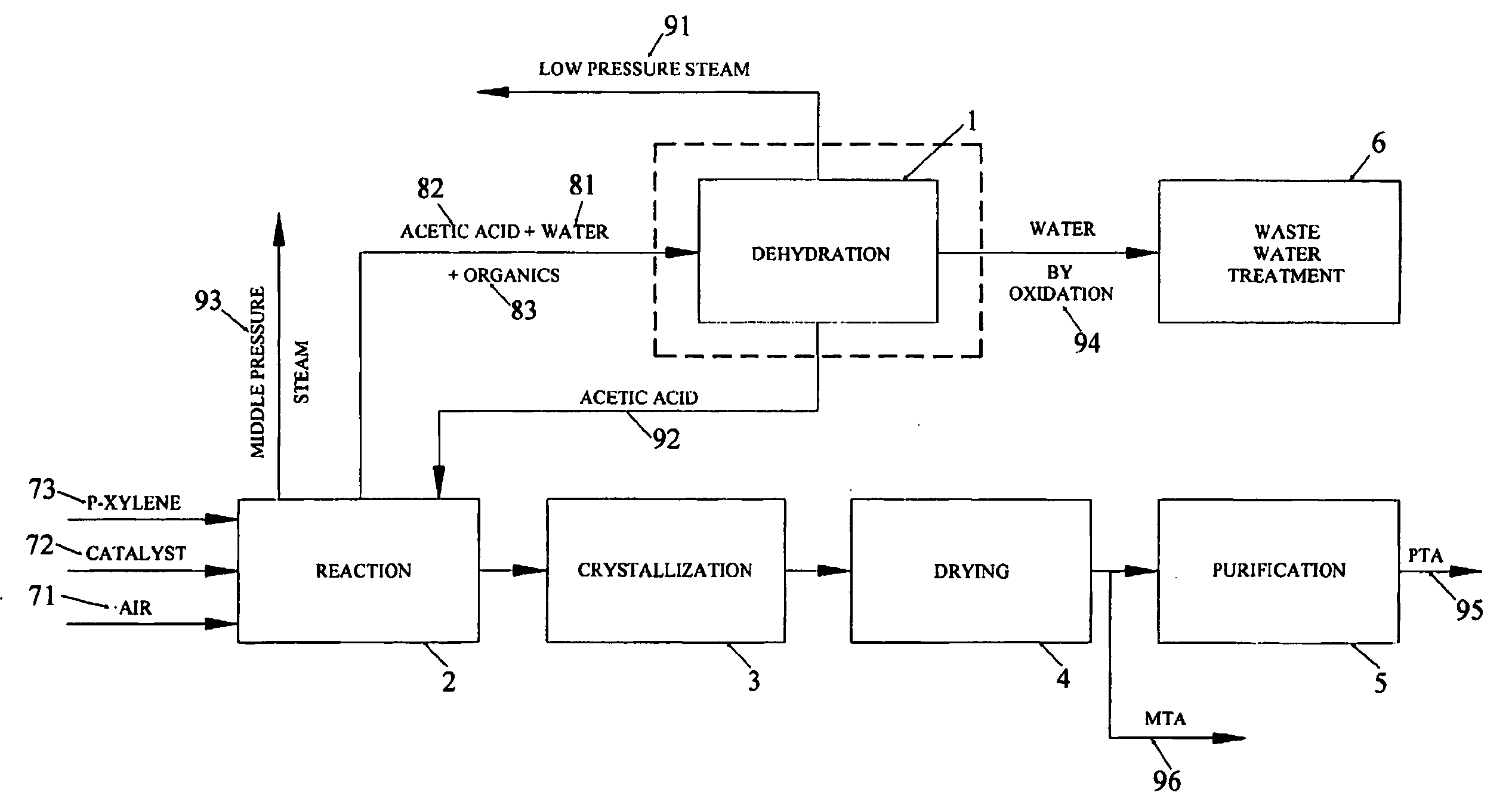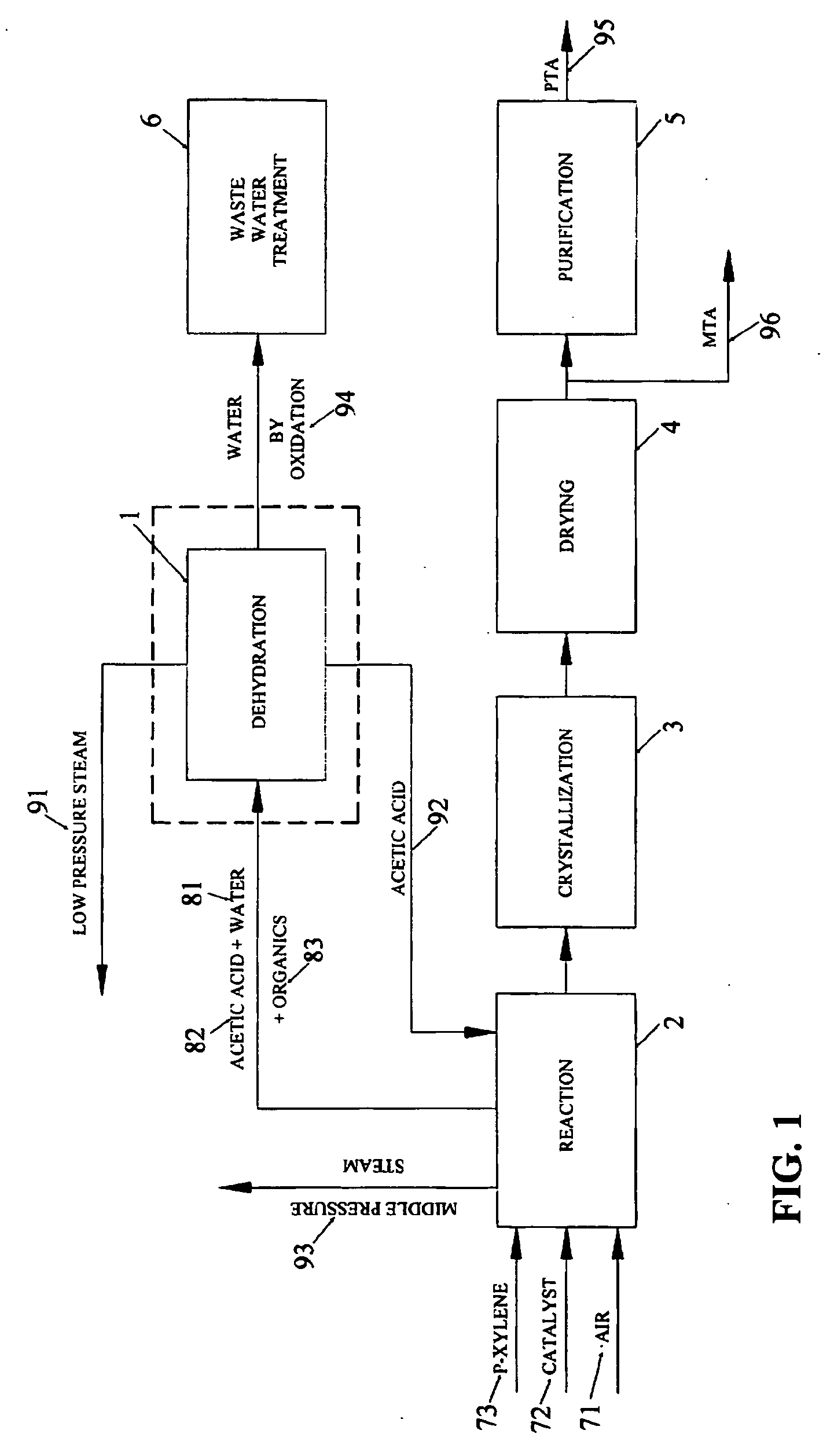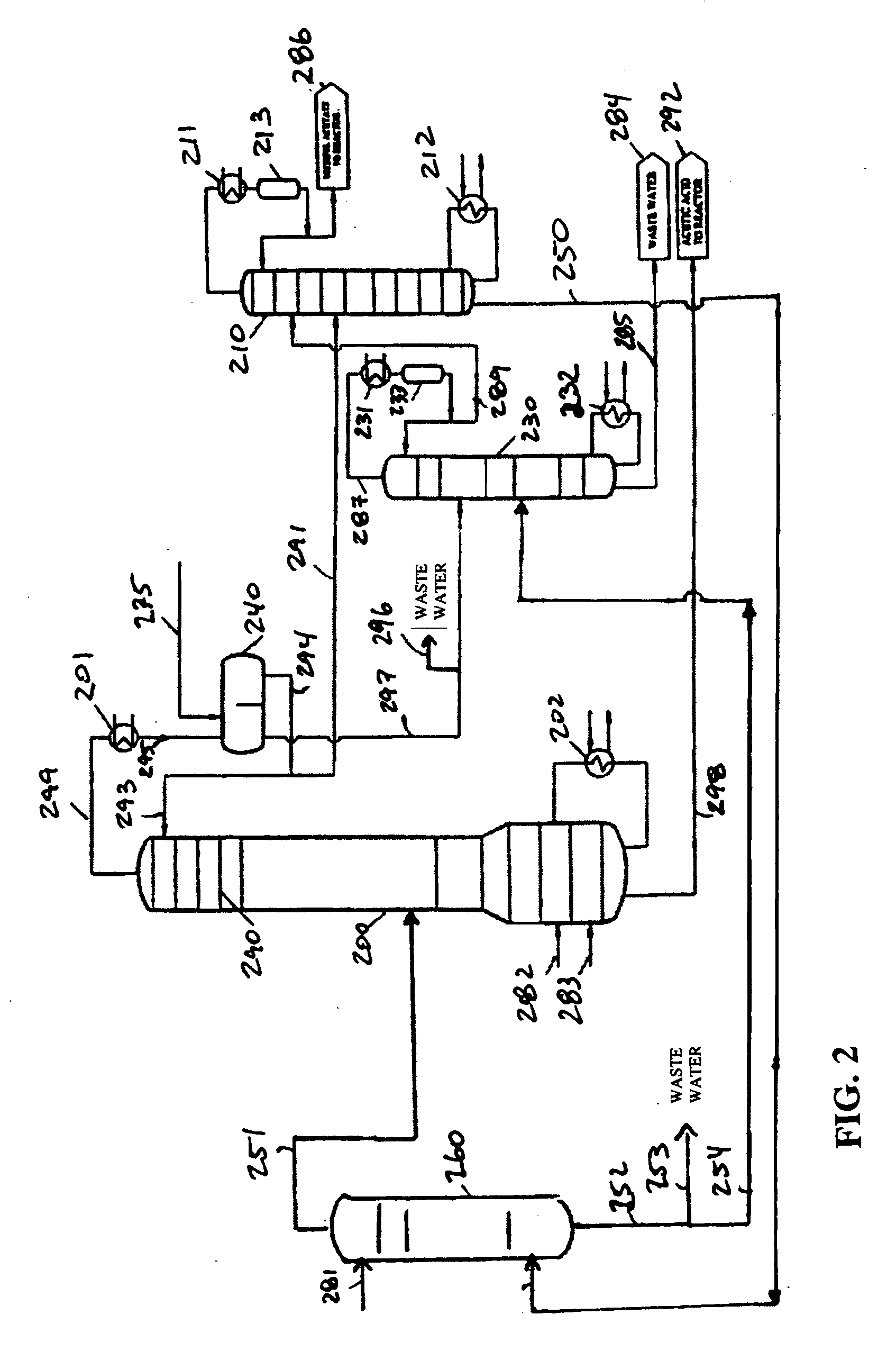System and method for acetic acid dehydration
- Summary
- Abstract
- Description
- Claims
- Application Information
AI Technical Summary
Benefits of technology
Problems solved by technology
Method used
Image
Examples
Embodiment Construction
[0025] The invention arose out of an observation that large amounts of energy are expended within the system during the production of terephthalic acid. In addition to the energy expenditures, minimal to no recycling was occurring where solvents such as acetic acid were not recovered and were sent to waste water treatment facilities, thereby increasing the energy requirements by requiring further processing outside the scope of the plant system.
[0026] Typically, industrial chemicals such as terephthalic acid are produced during multiple fractionation stages where heavier liquids are distilled with lighter vapors. A distillation column is used which comprises a cylindrical tower housing with multiple tower internals to promote the interaction between the vapor and liquid.
[0027] Conventional tower internals refers to trays, valves, downcomers, sieves and the like. Conventional distillation refers to a conventional distillation tower without the use of entrainers or solvents in the s...
PUM
| Property | Measurement | Unit |
|---|---|---|
| Azeotropic temperature | aaaaa | aaaaa |
Abstract
Description
Claims
Application Information
 Login to View More
Login to View More - R&D
- Intellectual Property
- Life Sciences
- Materials
- Tech Scout
- Unparalleled Data Quality
- Higher Quality Content
- 60% Fewer Hallucinations
Browse by: Latest US Patents, China's latest patents, Technical Efficacy Thesaurus, Application Domain, Technology Topic, Popular Technical Reports.
© 2025 PatSnap. All rights reserved.Legal|Privacy policy|Modern Slavery Act Transparency Statement|Sitemap|About US| Contact US: help@patsnap.com



